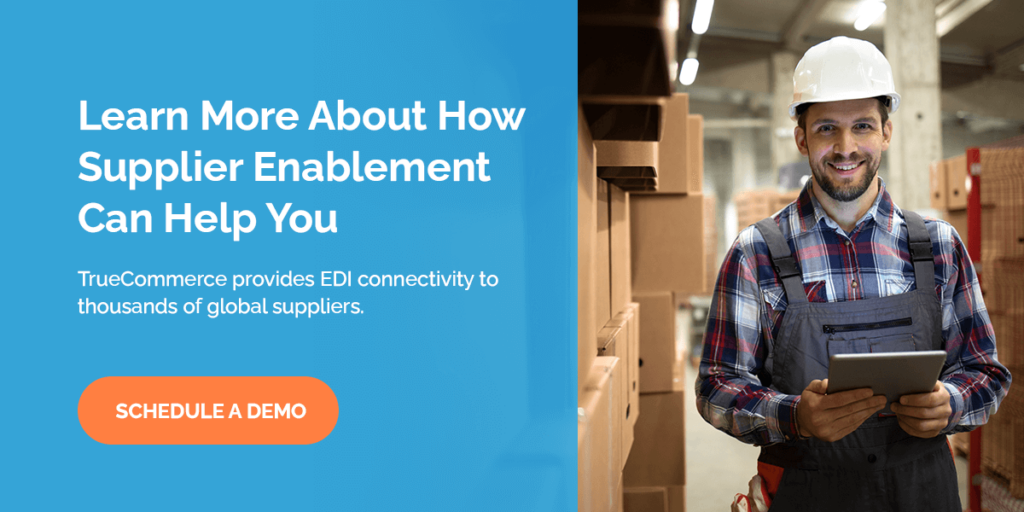Who Needs Supplier Enablement?
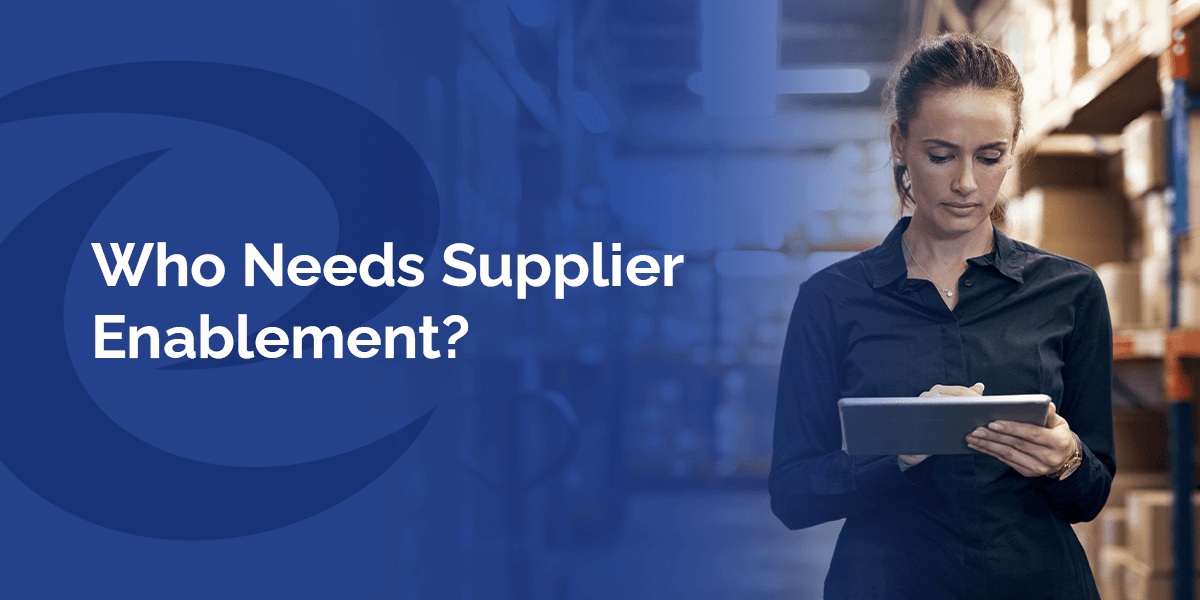
Your company needs to streamline data to stay ahead of the crowd in an omnichannel world. Supplier enablement optimizes your procure-to-pay cycle and leads to more reliable sourcing, improving decision-level visibility.
Supplier enablement is a multipronged process. It needs technology and connectivity options, features, services and support to ensure the efficient exchange of business documents. Many types of businesses can benefit from supplier enablement. Learn more about what it is and how it might be able to help you.
What Is Supplier Enablement?
Supplier enablement connects your company’s trading partners, or suppliers, to your supply chain. With supplier enablement, the providers of services and goods connect to your company’s back-office systems, allowing for exchanging invoices, purchase orders and other business documents. You can enable, or connect, suppliers using Electronic Data Interchange (EDI), web forms, RFID chips or other e-commerce tools.
Supplier enablement is forward-looking and provides suppliers with a choice of connectivity options, which help improve collaboration. It also improves order visibility, letting you know where an order is and when it’s likely to arrive. The result is a more agile and accurate supply chain.
Thanks to supplier enablement, your supply chain can better manage complex orders and adjust as needed in response to supply chain disruptions. The result is increased profitability and customer satisfaction.
The Supplier Enablement Process
Supplier enablement standardizes communication between buyers and suppliers by importing various communication forms, formating them, then sending them to the buyer.
Suppliers who participate in the process can use several integration options:
- EDI
- Web portals
- PDF processing
- XML or other structured documents
Supplier enablement streamlines connectivity for suppliers, no matter what their existing technical capacities are. It also helps reduce errors on the buyer’s end and minimizes the effort required to acknowledge orders, ship notices and process invoices. Supplier enablement results in accelerated fulfillment and procurement. It also reduces costs along the supply chain.
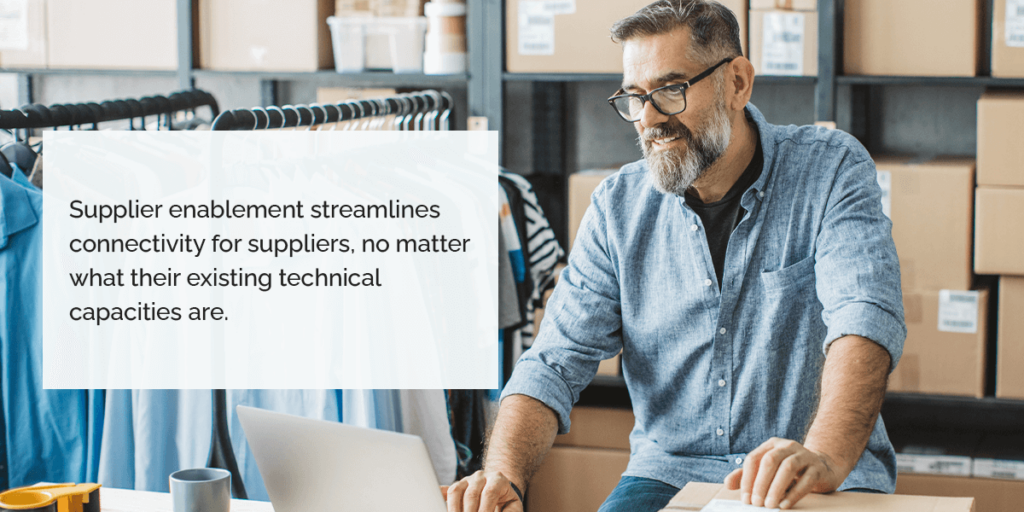
Who Needs Supplier Enablement?
Thanks to increasing complexity in supply chains, it takes more effort to coordinate fulfillment and procurement and manage suppliers. Many different types of companies and individuals can benefit from supplier enablement. A supplier enablement solution might be right for you if any of the following describe your situation:
1. Supplier Enablement for Accounting Professionals, Buyers and Operations or Procurement Managers
Whether you need to place orders from a vendor or process invoices, working with multiple vendor-specific processes can slow your processes or lead to miscommunication or errors. When it’s time to onboard new suppliers, you might face an inefficient process that leaves plenty of room for error and delay.
As a buyer, you’re responsible for ordering parts and materials from multiple vendors or ordering the products your company ultimately sells to end-users. You want to onboard new suppliers as quickly as possible to get the products into customers’ hands as soon as possible.
As the procurement management, you also have to order products and services. Instead of choosing which products your company will sell, you select suppliers for services and products your company needs for daily operation. You need to set and stick to a budget while ensuring your order quality products and services.
Accountants are often responsible for sending out invoices or processing and paying invoices from suppliers. The invoices you receive might be in various formats, such as PDFs or Excel files.
Supplier enablement for accounting professionals might look like standardizing processes and file types to alleviate the burden of onboarding new vendors and suppliers. Supplier enablement for buyers and operations managers helps your department grow while reducing overall costs. You end up with data you can use to make decisions about your company’s future without spending hours manually sorting through documentation.
You can better do your job, whether it’s managing procurement or operations, purchasing materials and inventory or managing accounts receivable and payable.
2. Supplier Enablement for Distributors, Retailers and Wholesalers
The retail landscape is more complicated than ever. Your brand might sell directly to consumers through your website or have shops on Amazon and eBay while balancing several brick-and-mortar locations. As a distributor, you might ship your products to clients worldwide. Wholesalers also face greater complexity, as they might sell to retailers and consumers.
Compounding the complexity are greater service expectations. Super fast shipping, in two days or even less, has become the norm. Many customers expect the product they’ve ordered to be exactly as described, or they want an easy, free and efficient return option.
You need to keep in touch with your suppliers to ensure they have the products you need to ship to customers and keep tabs on any product changes. For example, a supplier can’t suddenly change the color of their signature product without informing you.
A supplier enablement solution helps you manage the complexity of the retail, wholesale and distribution process. With it, you can quickly communicate with suppliers and stay on top of any issues or changes. You’ll be able to make adjustments as needed to keep customers in the loop and minimize the chance of disappointment or delayed shipments.
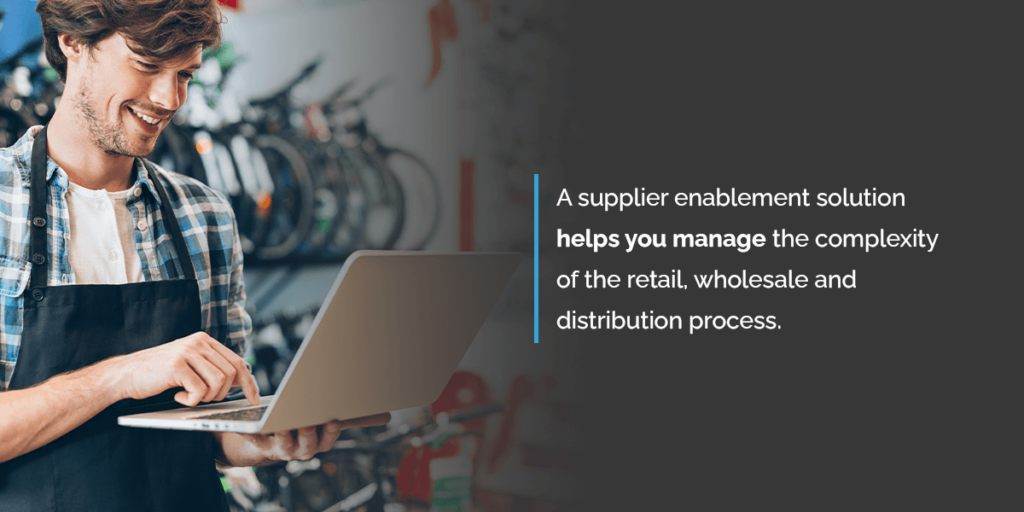
3. Supplier Enablement for Companies With Multiple Suppliers
There are some benefits to working with a single supplier for everything your company needs — your process is streamlined and you don’t have to juggle different methods or file formats. If you only have one supplier providing the materials you need, you can end up stranded if that supplier has a sourcing issue.
Many companies have relationships with multiple suppliers. You have at least one backup source if one supplier can’t get you what you need.
Working with multiple suppliers can make it more challenging to trade effectively with each one. You might end up with binders full of details on how to relate to the various suppliers you work with. The binders or vendor guides might let you know the vendor’s preferred communication method and file format and their acknowledgment process. Handling each vendor’s specific processes and requirements manually takes time and can drain your resources.
We don’t recommend switching to a single supplier system. Instead, if you work with multiple suppliers, we recommend supplier enablement. Once you embrace a supplier enablement solution, you can unify your communication processes and eliminate all those vendor binders for good.
Signs You’d Benefit From Supplier Enablement
One of the clearest signs it’s time to seriously consider supplier enablement is if supply chain complexities or new order profiles reveal how your current processes fall short. Some specific signs that supplier enablement is right for you include:
- You have a diversified supplier base: You work with suppliers large and small, some of which can support a full EDI, some of which can’t. Working with a supplier enablement service provider means your smaller suppliers who don’t have the bandwidth for their own EDI are more likely to adopt the one implemented by your supplier enablement solution. Everything’s unified and streamlined, saving you money and time and increasing adoption rates.
- You want to add suppliers to increase resilience: Working with multiple suppliers makes your company more resilient, as long as those second and third-tier suppliers are appropriately onboarded. With a supplier enablement platform, you can easily handle the required onboarding. Supplier enablement also lets you integrate new suppliers and quickly get them up to speed without putting too much burden on your team.
- You want to speed up onboarding: The faster you can get suppliers on board, the quicker you can introduce new merchandising programs. Similarly, the faster your onboard suppliers, the quicker you’ll see results. Using a supplier enablement service lets you get suppliers up and running in days rather than weeks.
- You want to add dropshipping: With drop-shipping, you accept orders but don’t handle the actual packaging and shipment of the product. In short, you’re handing your reputation over to a third party, which is responsible for packing and delivering orders. You need to provide drop-ship vendors with the order, inventory and fulfillment data necessary to let them efficiently process and fulfill orders. With a supplier enablement platform, you can exchange the required information with your suppliers.
- You want a more transparent supply chain: As a buyer, you must know where orders are in the supply chain. A transparent or visible supply chain helps you make better choices about inventory. It also allows you to minimize disruptions and keep customers informed. Supplier enablement automates order status data exchange, reducing your costs while helping you reach your goals and earn customers’ trust.
- You want to evaluate vendors: With supplier enablement, you can create scorecards for the vendors you work with. The scorecards assess how vendors perform in critical areas, such as shipping on time, minimizing stockouts and providing accurate fulfillment. Using the scorecards, you can decide which suppliers to continue working with and which to order from less frequently.
- You want a scalable supply chain management solution: Manual vendor management processes can be sufficient when your company is small and your supplier list is short. As you grow and work with more and more vendors, you’ll find the approach doesn’t scale. Trying to manage every vendor manually increases labor costs and leads to bottlenecks and delays. Supplier enablement grows and scales with you, creating a system of unified communication flow that minimizes tedious tasks while letting you add new vendors with ease.
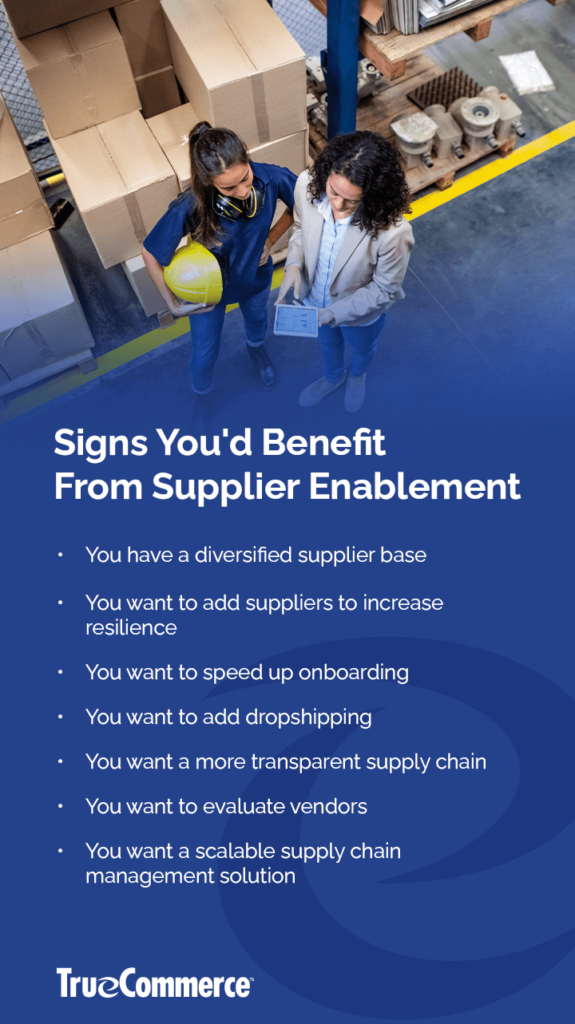
Learn More About How Supplier Enablement Can Help You
A supplier enablement platform saves you time, cuts costs and can increase supplier diversity. TrueCommerce provides EDI connectivity to thousands of global suppliers. Schedule a demo of our platform today to see how it works for yourself.
